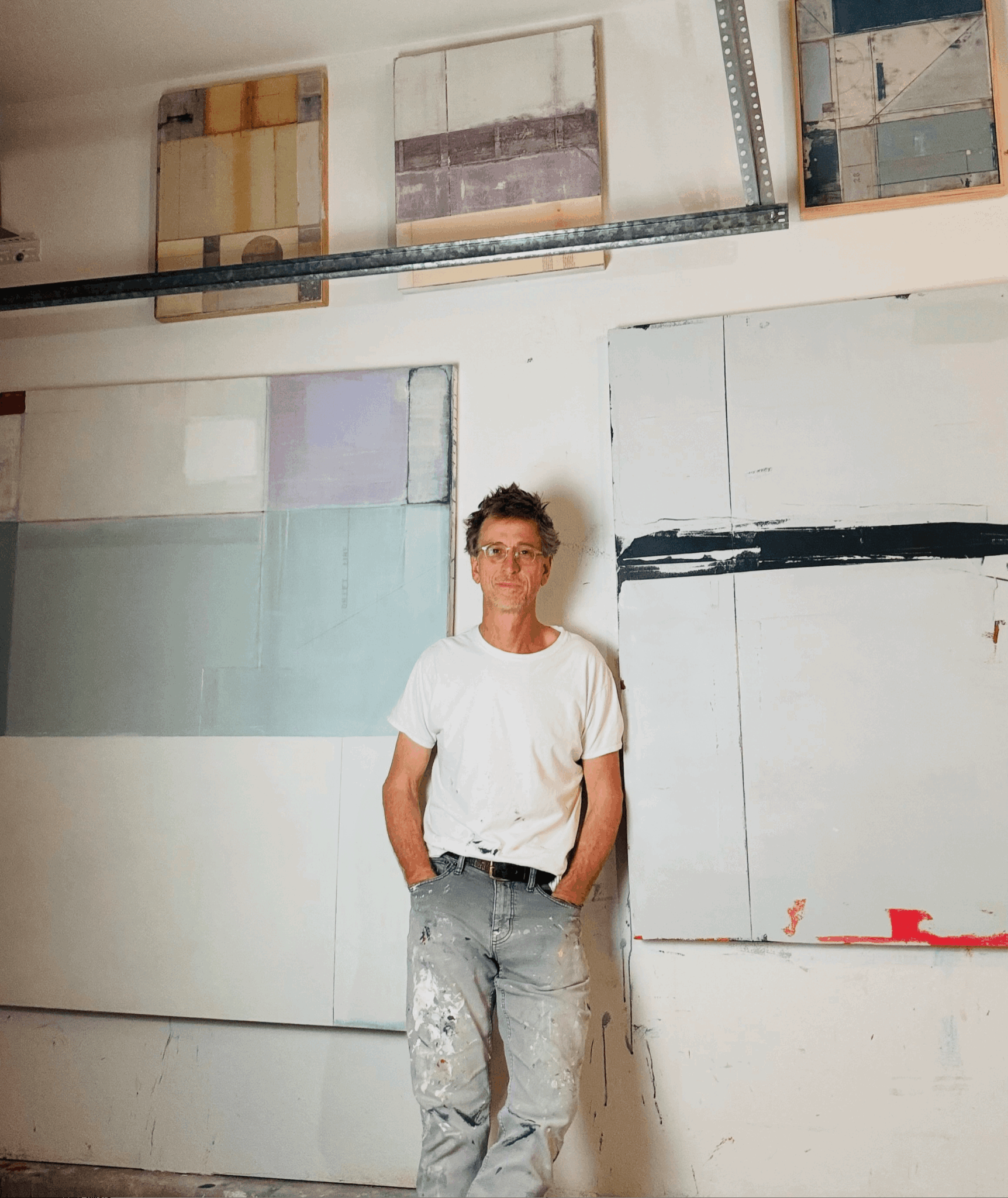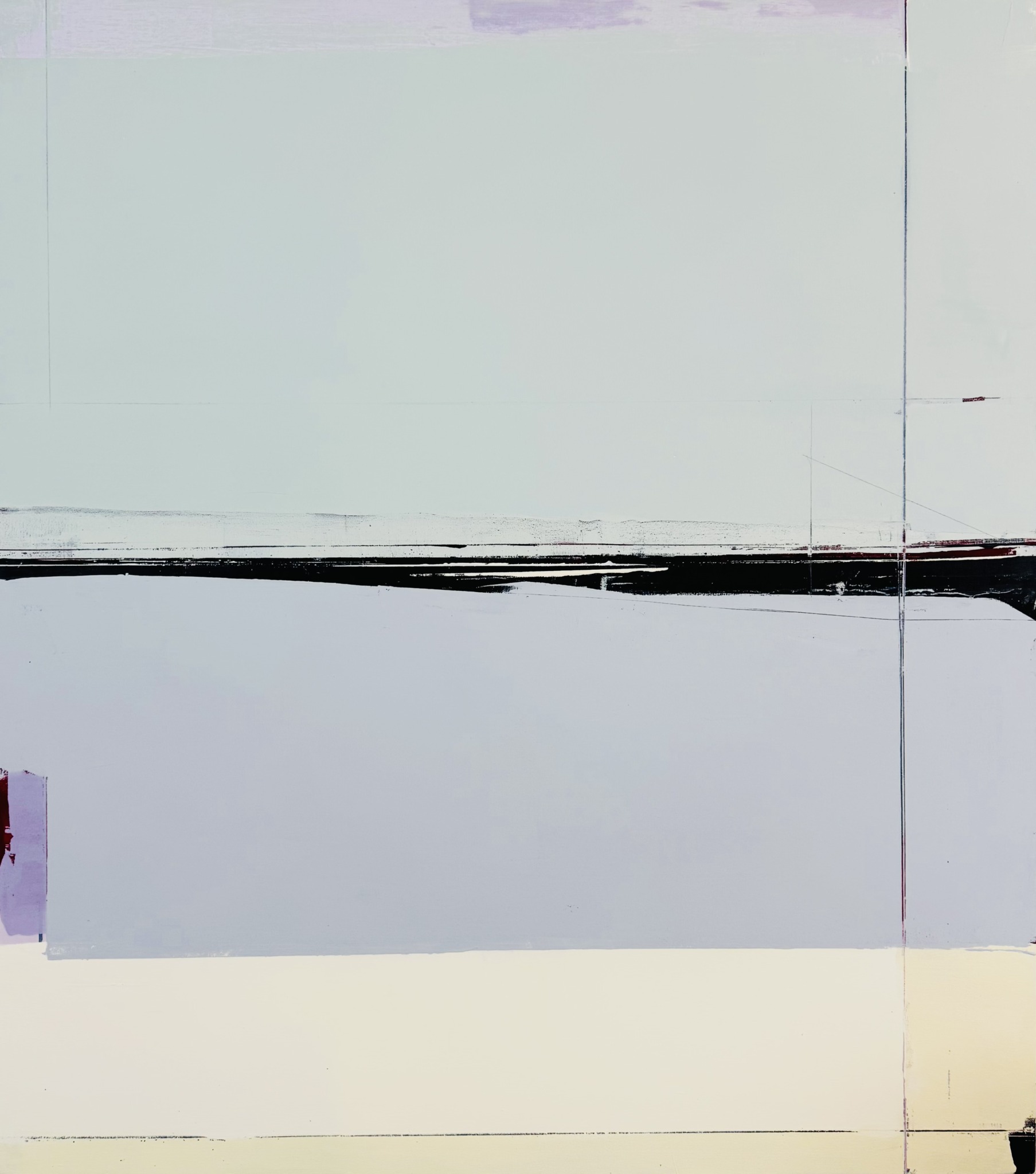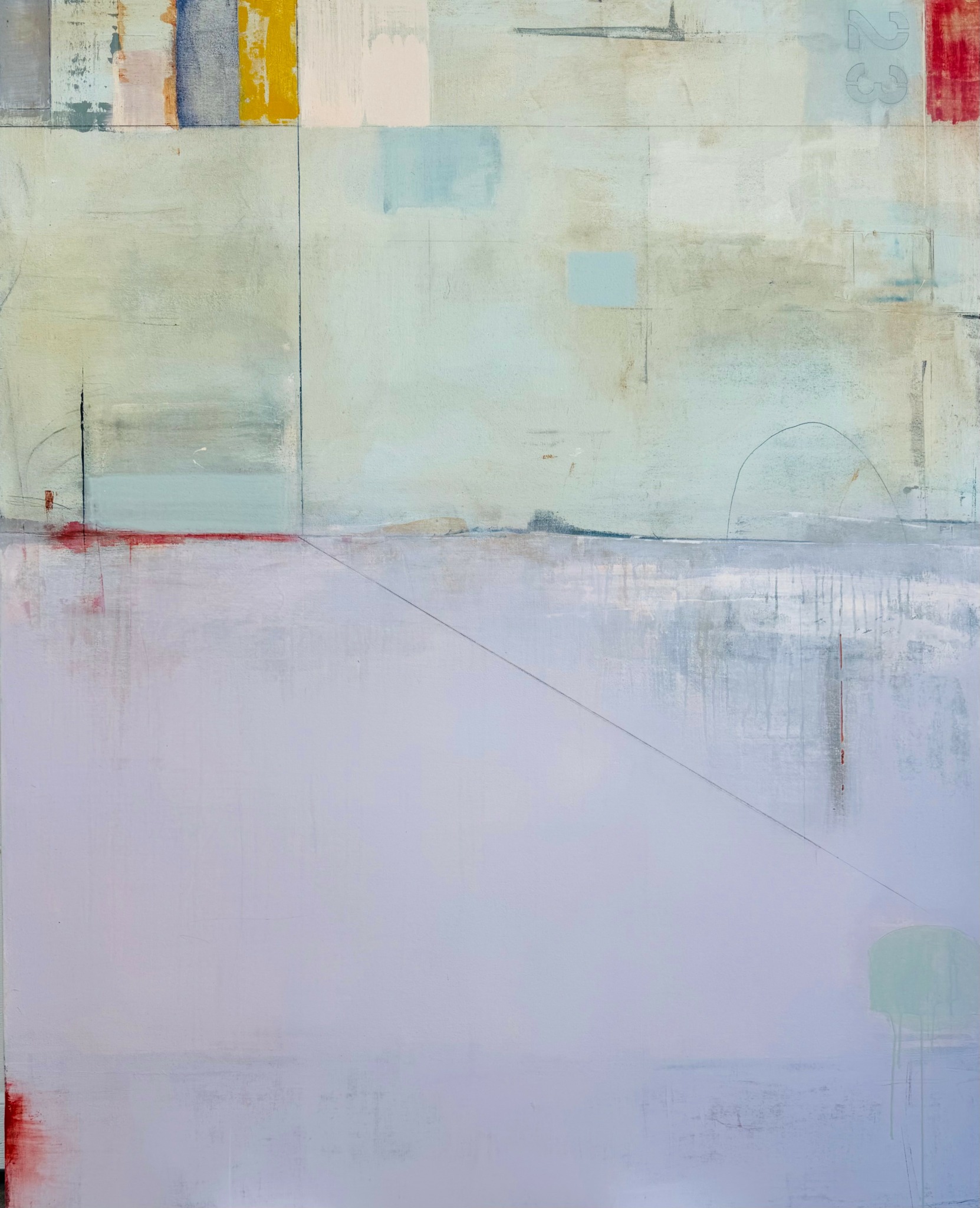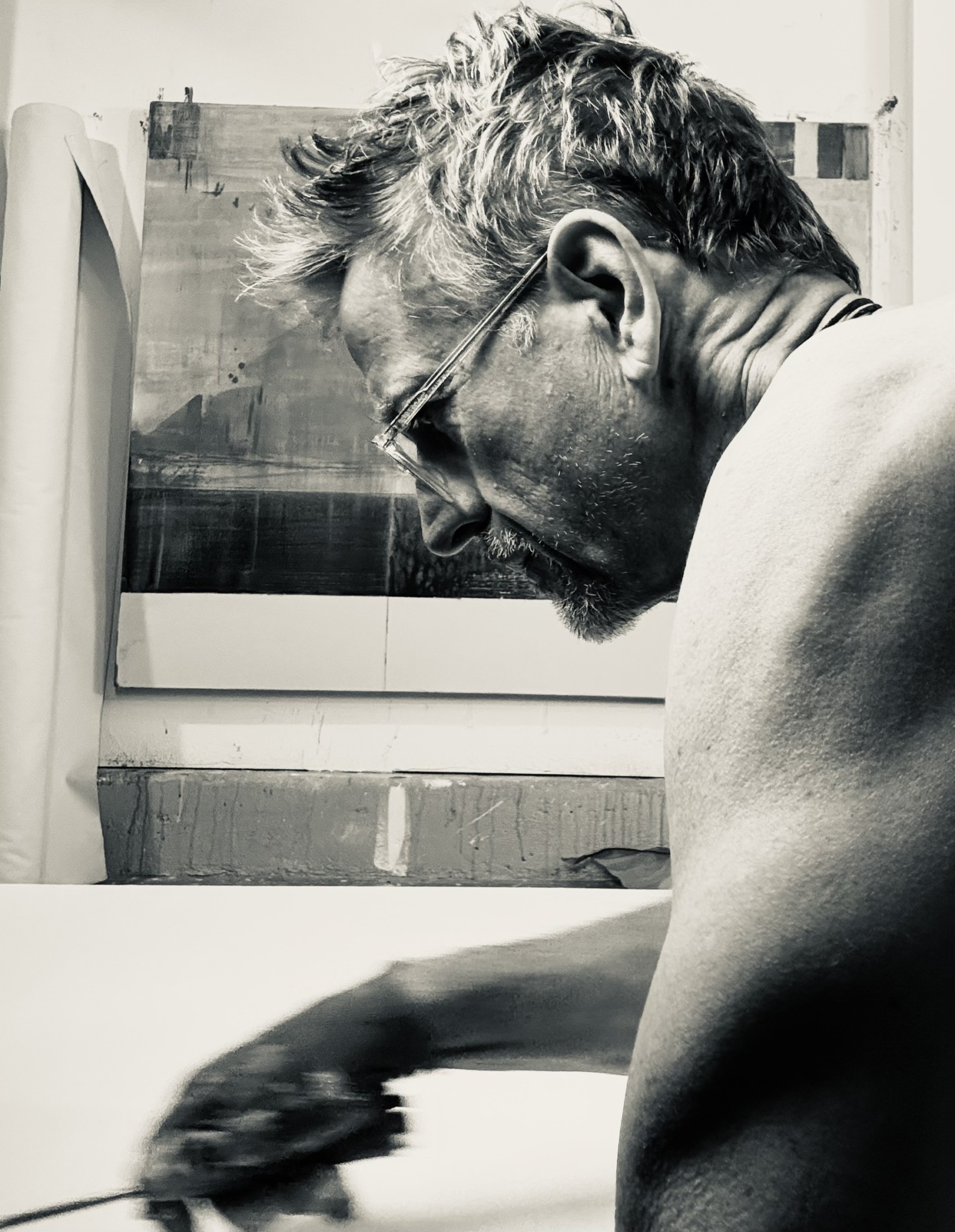We were lucky to catch up with Bruce Turk recently and have shared our conversation below.
Bruce, thanks for joining us, excited to have you contributing your stories and insights. How did you learn to do what you do? Knowing what you know now, what could you have done to speed up your learning process? What skills do you think were most essential? What obstacles stood in the way of learning more?
I learn mainly by trial, error, and practice. I started painting in high school and went on to take drawing and art history at Northwestern University, while studying acting. After college, I spent four years in Japan, training and working as an actor in a theatre company. At that time, I was mentored by the painter Ikuo Nishinarita who introduced me to the world of handmade papers and taught me to trust that artmaking is a form of “walkabout,” in which the work itself becomes a map to be followed. I’m reminded to listen to the work more than myself. It’s a bit like parenting a child. When should we stay out of the way? When should we step in? When I moved to New York City to further my acting career, I studied painting with Ronnie Landfield at the Art Students’ League. Landfield is a master of large scale acrylic wash works and that training has really influenced my work today. I would say that time has been a significant obstacle, since the most valuable thing to my development as an artist has been continual practice. Ultimately, I have learned the most by doing.

Awesome – so before we get into the rest of our questions, can you briefly introduce yourself to our readers.
I have always been a seeker—a lifelong learner—and I’ve pursued an unbeaten path toward self-awareness. For me, the arts have been a way to actualize the capacity to know myself. I create to express, yes; but ultimately, it is through creation that I learn about my own humanity.
I was born in San Francisco, raised in Austin, Texas and have moved around quite a bit since I graduated from high school. Four years at Northwestern University led to Chicago theatre, years of regional theatre, a four-year stint in Japan training and performing with Tadashi Suzuki, and 12 years in New York, working both on and off Broadway. Eventually, my wife and I moved out to the west coast to work at the Old Globe Theatre in San Diego. We have filled out this life with occasional screen work and recording audio books.
I’ve always hungered to work with dynamic collaborators and explore performance in order to bypass the critical mind. But during all these years as a working actor, I continued to pursue my passion for visual arts and maintained an art practice on the “back-burner” of my life. Eventually, my passion for painting exploded and I have been making art relentlessly for the past 5 years. Painting is yet another way to explore my interior life and communicate it to others. On the stage, I use physicality and language as a means; with painting, I use a visual language—a visual poetry.
I’m really proud of the work on large canvases that I’m doing now. I spend a lot of time on our Southern California coast, absorbing the environment at the water’s edge. I’m exploring the interface there between development and the coastline. By “interface” I mean how development and infrastructure intersect and abut the ocean. Progress vs. Nature. It seems so peaceful along the shore, but there is actually physical conflict there. There is tension below the surface of the water and I’m exploring that visually.
The biggest challenge I have faced on this project is trusting myself—trusting my intuition. I used to start a project with an idea of what it was going be and I planned the steps that I would take to get there. But as I’ve gotten more comfortable with a variety of techniques, I don’t worry about that so much anymore. To start, I set my sails in a general direction then see where the wind takes me. For instance, I know the world of color that I want to work in and I have some basic design ideas which tend to be fairly formal. Once those two things are set up I leave it to the moment— to chance and feeling. Sometimes what I think is a mistake will actually spark a conversation between me and the painting. I listen to the environment and then once I start working I listen to what the painting has to offer. With the first gesture, each canvas takes on a life of its own. The next piece will be an extension or a response to that initial piece. I often work on a group of several pieces at the same time and then out of those explorations larger pieces evolve. Before I know it, an entire visual discussion is laid out before me. This is fascinating if you are interested in creativity and self discovery, because one can see clearly how the germ of an idea spawns, develops, and deepens over time.
All the works of the past year are part of a large series called, “Coastal Approach.” How do we engage with the coastline? When we approach it are we only considering our own experience? Our own pleasure? How do we approach the ocean with respect and awe and love? How can we sustain it, not only for ourselves but for generations to come?
The solo exhibit, “Coastal Approach,” will have a reception on September 5th at 7pm at the First Lutheran Church at 1420 3rd Ave, San Diego. It will be on view through October 5, 2025.

How can we best help foster a strong, supportive environment for artists and creatives?
Buy artwork. Go to live performances. Visit museums. Talk about art. Share your reactions to art. Tell people about how art makes you feel. MAKE ART! We need to nurture our souls. We need to cultivate a culture of the arts in this country. There is too much emphasis put upon the bottom line when it comes to the value of the arts. The value of cultural wealth cannot be measured in the same way as, say, a car, or a new pair of jeans. Making, sharing, and viewing art contribute to mental well being. Art lowers stress. It prompts thought and feeling. It promotes conversation and connection. It helps to cultivate empathy. It is mysterious. It is profound. And it is spiritual.

For you, what’s the most rewarding aspect of being a creative?
Listening to the responses of those who view my work and discovering that it has sparked some kind of insight within them.
Contact Info:
- Website: https://www.bruceturk.com
- Instagram: @bruce.turk




